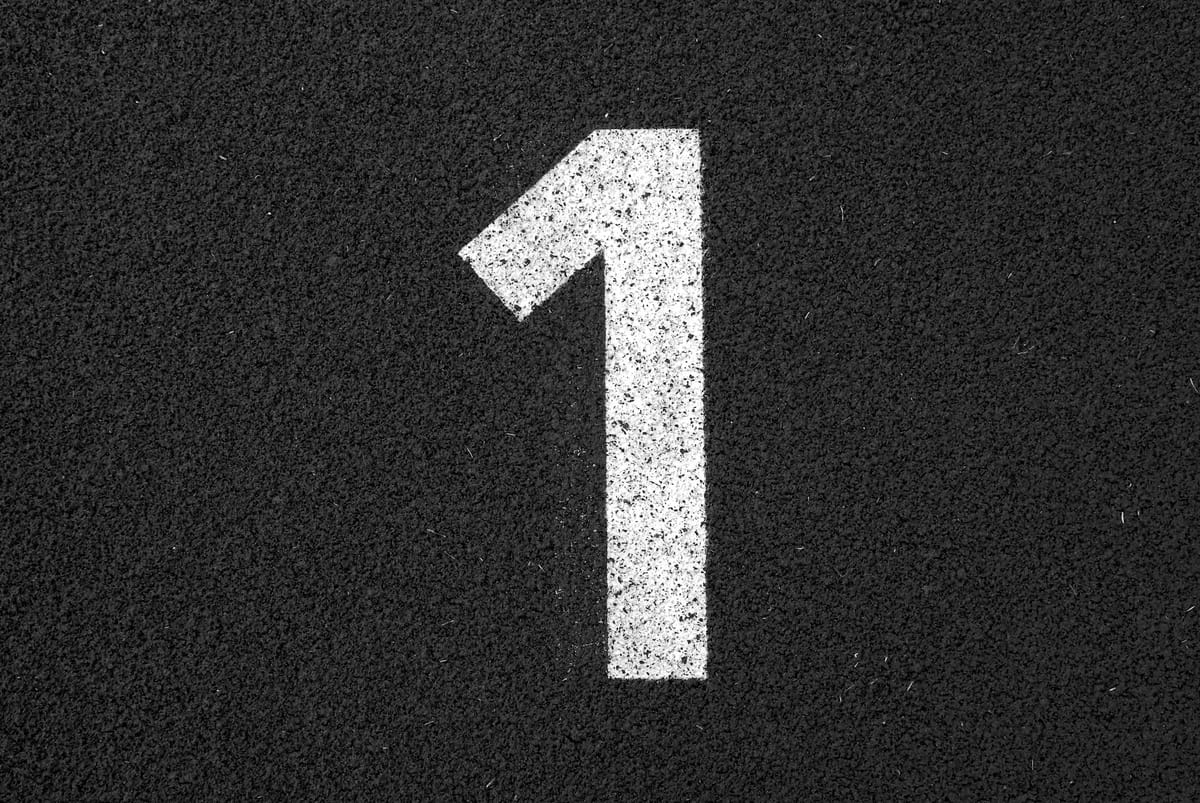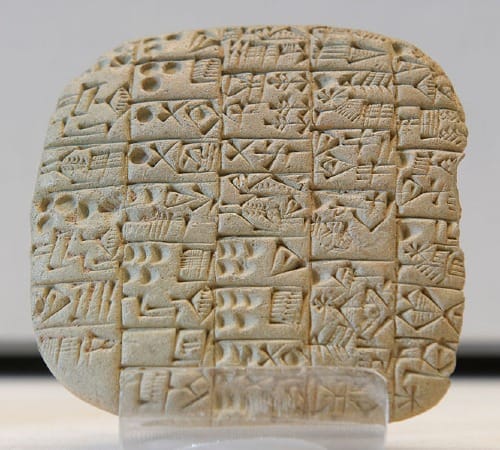Part 1 - The Story of Number One: From Ancient Symbols to Theoretical Mathematics

The number one is a simple yet powerful number. It is a single stroke on a sheet of paper yet the very key to advancing civilisation. The origins of this number are shrouded in mystery, nevertheless, its profound impact on humankind remains unmistakable.
The first solid piece of evidence proving the existence of the number one appeared roughly 20,000 years ago. It was a series of unified lines etched into the fibula of a baboon, now known as the Ishango Bone. The Ishango Bone was found in the Congo region of Africa in 1960. Now, the obvious question to ask would be whether the lines had any real purpose or not. However, archaeologists believe that the lines were too uniform to be accidental, rather they served as tally marks to keep track of something. What that “something” is remains a mystery.

Before the rise of cities, numbers and counting were not really needed. Mathematics became a part of homo sapiens only after the Agricultural Revolution when tasks like remembering the yield in the fields, as well as taxes and revenue collection, sparked a strong urge for writing and data storage. Numbers and counting began about 4,000 BC in Sumer, one of the earliest human civilisations located in the southern part of what is now Iraq. Cities needed a way to organise data regarding their population of people and livestock, as well as crops and artisan goods that were either imported or exported out of the city. To satisfy this demand, they came up with a method of counting as a series of tokens. Each token was meant to represent something tangible, for example, a goat. If a man had seven goats, he was given seven tokens. If he traded the goat or killed it for meat, one token would be taken away. While seemingly simple, this method of counting was a major step in the world of mathematics, for it introduced the brilliant invention of subtraction, and thus the invention of arithmetic.
To secure the tokens, the Sumerians would put a group of them inside clay pouches. The pouches would then be sealed up and the number of tokens inside would be stamped on the outside of the pouch. One stamp symbolising one token. Evidently, other integers like the number five or eight had not been invented yet, so pouches were marked repeatedly with a stamp, almost like tally marks. After some time, the Sumerians realised that neither pouches nor tokens were necessary at all, seeing as the stamps on the outside of a pouch could just as easily be transferred to a clay tablet. This development not only revolutionised arithmetic but also birthed the idea of writing and keeping records of day-to-day life.

To prevent fraud, the Sumerians created an official group of people who kept track of the wealth of the population, much like a group of accountants. Wealth and capital were only worth something if run by and approved of by the group of accountants. However, only a select few were allowed to enter this group.
Numbers were not only used for keeping track of wealth, however, around 3,000 BC the Egyptians started using it as a unit of measurement to measure length. This invaluable system allowed them to build grand structures such as pyramids, temples, canals and obelisks with great accuracy. They invented the cubit, which they considered to be a sacred measurement. It was the length of a man’s forearm, from his elbow to his fingertips, plus the width of his palm. To prove just how sacred the cubit was, they had officially ordained sticks kept in temples from which countless copies were made and handed out to construction workers.
The Egyptians were also the first to invent different symbols for different numbers. The symbol for one was a simple line. The symbol for ten was a rope. A coil of rope symbolised a hundred. Most notable was the number one million: a number so valuable and sacred that only a pharaoh was worthy enough to use it. Its symbol was a prisoner on his knees with his hands raised in the air, begging for forgiveness. This depiction was meant to symbolise the millions of prisoners and slaves brought under the pharaoh’s rule.

Undoubtedly, Greece followed suit in contributing to the world of numbers and counting, much thanks to Pythagoras, a Greek philosopher who made important developments in mathematics, astronomy and music theory. He was known to be the first man to come up with the idea of odd and even numbers. However, he is most famous for his Pythagorean theorem which states that in a right-angled triangle, the square of the length of the hypotenuse (the side opposite the right angle) is equal to the sum of the squares of the lengths of the other two sides. This theorem is fundamental in geometry and has widespread applications in various fields.
It was Archimedes, who took mathematics to a whole other level with his inventive and practical experiments. One such experiment involved a sphere. Archimedes wondered if one could turn the surface of a sphere into a cylinder and if possible, what the difference in surface area would be. It was his work that enabled mapmakers to turn the surface of the globe into a flat map. Archimedes is perhaps best known for his discovery of the principle of buoyancy. According to legend, he made this discovery while taking a bath and noticed that the water level rose as he got in. This led him to formulate the principle that a body submerged in a fluid is buoyed up by a force equal to the weight of the displaced fluid. This principle is known as Archimedes' Principle.
Sadly, the golden age of mathematics in the classical world ended with Archimedes after he was killed by a Roman soldier during the Siege of Syracuse in 212 BC. Mathematics would soon take a turn for the worse under Roman rule…
Next week we will talk about the role numbers played in the Roman military as well as India’s revolutionary invention of the number zero and how it laid the groundwork for the modern digital age we now live in.



